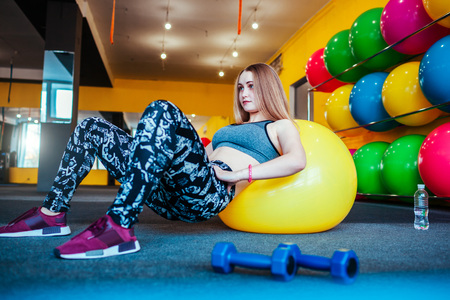1. The Rise of Women in Sports
In recent years, the landscape of sports in the United States has seen a remarkable shift with more women than ever before stepping onto fields, courts, and tracks. Whether its joining school teams, participating in community leagues, or competing at elite levels, womens involvement in both competitive and recreational sports is on the rise. This growing participation is not just about breaking records or winning medals—it’s also making a big difference in women’s health and the way communities connect.
Growing Numbers Across the Nation
Today, you’ll find women actively involved in a wide variety of sports—from soccer and basketball to running clubs and CrossFit groups. The table below shows a snapshot of popular sports among women and their estimated participation numbers in the U.S.:
| Sport | Estimated Female Participants | Level (Recreational/Competitive) |
|---|---|---|
| Soccer | ~2 million | Both |
| Basketball | ~1.5 million | Both |
| Running/Track & Field | ~10 million | Both |
| Volleyball | ~500,000 | Both |
| Cycling | ~3 million | Mainly Recreational |
| Tennis | ~1 million | Both |
| CrossFit/Fitness Training | ~4 million | Mainly Recreational |
The Impact on Women’s Health and Wellness
The benefits of increased sports participation go beyond physical fitness. Regular activity helps lower risks for chronic diseases like diabetes and heart disease, improves mental health by reducing stress and anxiety, and boosts self-confidence. For many women, being active isn’t just about personal gains—it’s about feeling stronger, both physically and emotionally.
Community Connections and Support Systems
The rise of women in sports has also helped build supportive communities. Team sports encourage teamwork and friendship, while local clubs offer spaces for networking and socializing. Across the country, women are inspiring each other to get active and stay engaged—creating positive role models for younger generations.
Common Gender-Specific Injuries in Female Athletes
Understanding Injury Patterns in Women’s Sports
Female athletes are strong, resilient, and highly skilled, but they also face unique challenges when it comes to sports injuries. Certain injuries occur more often in women than men, due to differences in anatomy and hormones. Knowing which injuries are most common can help female athletes, coaches, and physical therapists create better training and recovery plans.
Most Prevalent Injuries Among Female Athletes
| Injury Type | Description | Why Its More Common in Women |
|---|---|---|
| ACL Tears (Anterior Cruciate Ligament) | Knee ligament injury often caused by sudden stops or changes in direction | Anatomical differences like wider hips and a greater Q-angle (the angle between the hips and knees) put extra stress on the ACL. Hormonal changes during the menstrual cycle may also affect ligament strength. |
| Stress Fractures | Tiny cracks in bones from repetitive impact, common in legs and feet | Women are at higher risk due to lower bone density and hormonal fluctuations that can affect bone health, especially with irregular periods or low energy availability. |
| Concussions | Brain injuries from blows to the head or body causing the brain to move rapidly inside the skull | Studies suggest women may have less neck strength, which can increase concussion risk. There is also evidence that hormonal differences influence recovery time and symptoms. |
Anatomical Differences That Influence Injury Risk
- Wider Pelvis: A wider pelvis changes the angle of the thigh bone, increasing knee stress.
- Softer Ligaments: Hormones like estrogen can make ligaments more flexible but also more prone to injury.
- Muscle Imbalances: Women may have different patterns of muscle strength, affecting joint stability.
The Role of Hormones in Injury Risk
Hormonal fluctuations throughout the menstrual cycle can impact ligament laxity (looseness) and bone strength. For example, during certain phases of the cycle, ligaments may be more vulnerable to stretching or tearing. This is one reason why some injuries peak at specific times during the month for female athletes.
Physical Therapy: Tailored Solutions for Women’s Needs
A good physical therapy plan takes these gender-specific risks into account. Therapists focus on exercises that build joint stability, improve muscle balance, and support overall bone health. By understanding how female anatomy and hormones play a role in sports injuries, physical therapists can help women stay healthy and active on and off the field.

3. The Role of Physical Therapy in Prevention and Recovery
Personalized Prevention Programs for Female Athletes
Physical therapists play a critical role in helping women athletes prevent injuries before they happen. Every athlete is different, and women often face unique risks due to anatomical and physiological differences. Physical therapists use their expertise to assess these risks and create personalized prevention programs. These programs focus on strengthening muscles, improving flexibility, enhancing balance, and correcting movement patterns that may put female athletes at higher risk for injuries such as ACL tears, stress fractures, or shoulder problems.
Key Elements of Prevention Programs
| Focus Area | Description | Common Examples |
|---|---|---|
| Strength Training | Builds muscle support around vulnerable joints | Hip and core exercises, resistance training |
| Flexibility Training | Improves range of motion and reduces muscle tightness | Dynamic stretching, yoga-based routines |
| Neuromuscular Training | Enhances coordination and body awareness | Balance drills, agility ladders, plyometrics |
| Education & Technique Correction | Teaches proper form to minimize injury risk | Jump landing mechanics, running gait analysis |
Rehabilitation Protocols Tailored to Female Athletes
If an injury does occur, physical therapists guide athletes through recovery with rehab plans tailored to their specific needs. Women may recover differently than men because of hormonal fluctuations or anatomical structure. Therapists consider these factors when designing rehab protocols—focusing on gradual progression, safe loading, and functional return-to-play criteria.
Steps in a Rehabilitation Plan
- Assessment: Identify the injury’s cause and severity.
- Pain Management: Use modalities like ice, heat, or manual therapy to reduce discomfort.
- Range of Motion Restoration: Gentle movements to regain flexibility.
- Strengthening: Specific exercises targeting weak or affected areas.
- Sport-Specific Drills: Activities that mimic the athlete’s sport demands.
- Education: Teach self-management strategies to avoid re-injury.
- Return-to-Play Evaluation: Carefully test readiness before full participation.
The Value of a Team Approach
A physical therapist works closely with coaches, athletic trainers, and physicians to ensure every aspect of prevention and recovery is covered. This team-based approach helps female athletes get the care they need to stay healthy and perform at their best.
4. Empowering Athletes: Education and Advocacy
The Power of Education in Injury Prevention
For women in sports, understanding how to prevent and manage injuries is essential. Education isn’t just for athletes—it’s also important for coaches and parents. When everyone knows the unique risks women face in sports, they can work together to keep athletes safe and healthy.
Key Topics for Athlete Education
| Topic | Why It Matters |
|---|---|
| Proper Warm-Up and Cool-Down | Helps reduce muscle strains and joint injuries common in female athletes |
| Recognizing Early Signs of Injury | Early detection prevents minor issues from becoming serious problems |
| Nutrition and Hydration | Supports recovery and overall physical health, which is vital for injury prevention |
| Mental Health Awareness | Mental well-being impacts recovery speed and motivation after an injury |
| Gender-Specific Risks (like ACL injuries) | Keeps athletes informed about injuries that are more common among women, so they know what to watch out for |
The Role of Coaches and Parents as Advocates
Coaches and parents play a huge part in keeping female athletes safe. They need access to up-to-date information about injury risks, prevention strategies, and the importance of rest and recovery. By staying educated, they can advocate for safer training programs, appropriate equipment, and supportive team environments.
Ways Coaches and Parents Can Support Athletes
- Create open communication: Encourage athletes to speak up about pain or discomfort without fear of losing playing time.
- Push for proper facilities: Advocate for equal access to high-quality fields, gyms, and rehabilitation resources.
- Support ongoing education: Attend workshops or seminars focused on sports safety for women.
- Promote balanced training: Help ensure training plans allow for adequate rest days and cross-training to prevent overuse injuries.
- Champion mental health: Be aware of stress or anxiety related to injuries or pressure to perform.
Pushing for Equity in Sports Resources
Advocacy goes beyond individual support—it’s about making sure all women have fair opportunities in sports. This means pushing schools, clubs, and organizations to provide equal funding, quality equipment, certified trainers, and accessible physical therapy services. When resources are distributed fairly, women are better able to prevent injuries and recover fully if they do get hurt.
5. Looking Ahead: The Future of Women’s Sports Medicine
As more women participate in sports at all levels, the world of sports medicine is rapidly evolving to better support female athletes. Researchers, physical therapists, and medical professionals are working together to address gender-specific injuries and create innovative solutions for long-term health.
Ongoing Research: Understanding Women’s Unique Needs
Scientists and doctors are learning more about how women’s bodies respond differently to training, injury, and recovery. For example, studies focus on how hormonal changes during the menstrual cycle can impact muscle strength, joint stability, and injury risk. There’s also growing interest in understanding the higher rates of ACL (anterior cruciate ligament) injuries among female athletes compared to males.
Key Areas of Research in Women’s Sports Medicine
| Research Area | How It Helps Female Athletes |
|---|---|
| Hormonal Influence on Injuries | Helps design training plans that account for menstrual cycles to reduce injury risk. |
| Biomechanics and Movement Patterns | Improves physical therapy exercises tailored to women’s unique movement patterns. |
| Prevention of Overuse Injuries | Creates guidelines for safe training loads and recovery strategies. |
| Mental Health Support | Addresses stress, body image, and performance anxiety specific to female athletes. |
Innovations in Physical Therapy: New Tools and Approaches
The field of physical therapy is embracing new technology and methods designed with women in mind. Wearable sensors help monitor movement and detect early signs of fatigue or improper technique. Virtual reality (VR) tools make rehabilitation exercises more engaging and effective. There is also an emphasis on education—helping athletes understand their bodies so they can take charge of their health.
Examples of Innovative Physical Therapy Tools
| Innovation | Description | Benefit for Female Athletes |
|---|---|---|
| Wearable Motion Sensors | Track real-time movement data during training or rehab. | Spot risky patterns before they lead to injury. |
| Customized Strength Programs | Create exercise plans based on individual biomechanics. | Support safer return-to-play after injury. |
| Education Apps & Videos | Provide easy-to-understand guidance on injury prevention. | Empower athletes to care for their own health. |
| Mental Wellness Coaching | Adds psychological support as part of rehab programs. | Tackles issues like confidence and motivation post-injury. |
The Evolving Landscape: A Team Approach for Better Outcomes
The future of women’s sports medicine is all about teamwork. Doctors, physical therapists, coaches, nutritionists, and mental health specialists are joining forces to give female athletes well-rounded care. This collaborative approach means not just fixing injuries but preventing them—and helping athletes thrive both on and off the field. As research continues and new technologies emerge, the outlook for women in sports has never been brighter.

